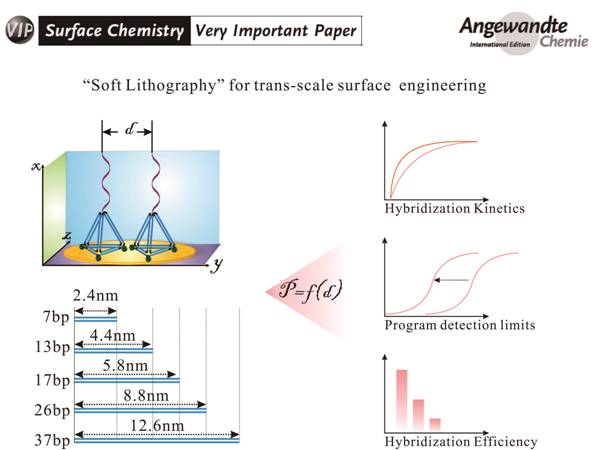Recently, researchers from Shanghai Institute of Applied Physics, CAS, have developed an advanced technology to engineer the biosensing interface with nanometer precision, by incorporating DNA nanostructures into macroscopic gold interfaces to significantly improve the detection performance of electrochemical biosensor. They published their results in Angew. Chem. Int. Ed. 2015, 54, 2151, which is selected as a Very Important Paper.
It is a great challenge to design programmable engineering of a biosensing interface in the field of biomolecular detection. To address the problem, a team led by Prof. Chunhai Fan, in the division of Physical Biology in Shanghai Institute of Applied Physics, has systematically studied on biomolecule self-assembly on the biosensing interface and published a series of papers in recent years (including Acc. Chem. Res.2010, 43, 631 and Acc. Chem. Res. 2014,47, 550). In 2010, they developed the first 3D DNA nanostructure-based electrochemical biosensor by using a rigid tetrahedral DNA nanostructure based on DNA molecule self-assembly (Adv. Mater. 2010, 22, 4754). Based on these works, a graduate student, Meihua Lin and her supervisors, Prof. Chunhai Fan and Prof. Xiaolei Zuo et al., have designed various size of the tetrahedral DNA nanostructures with precise control, which allowed “soft lithographic” strategy to engineer the microscopic gold interface. This trans-scale surface engineering could pattern DNA nanostructures with nanometer precision on macroscopic gold electrodes, and finely tune the lateral space between the DNA probes which are anchored on these nanostructures. Then, they systematically investigated the relationship between lateral distance of the DNA probes and the performance of the biosensor, and improved both the kinetic and thermodynamic process of the biomolecule recognition on the interface, and then significantly improved the sensitivity and kinetics of the electrochemical biosensor. (Source from the division of Physical Biology, Shanghai Institute of Applied Physics)


